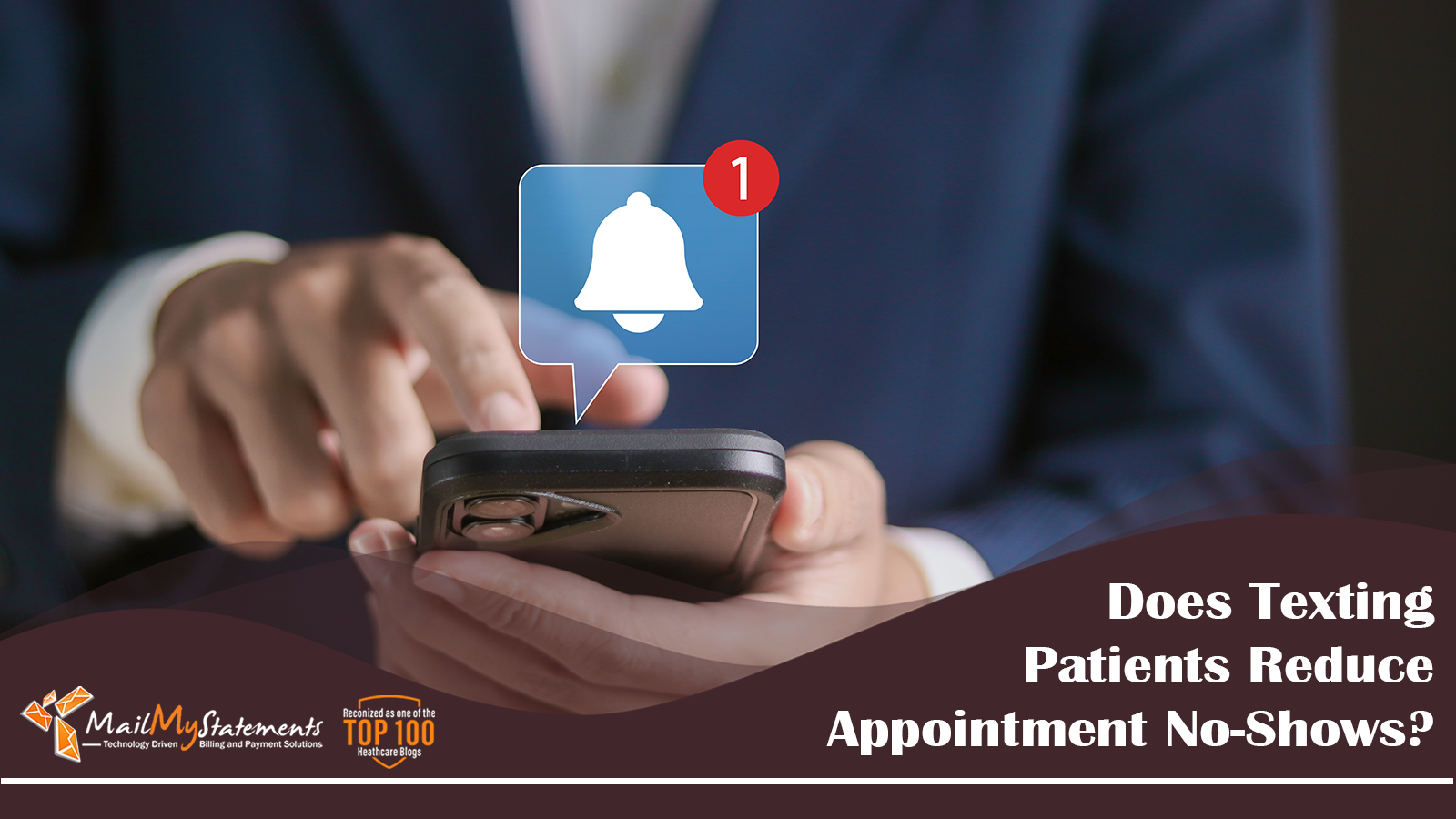Does Texting Patients Reduce Appointment No-Shows?

Missed patient appointments are a persistent challenge in healthcare, affecting providers in clinics, hospitals, and private practices. No-shows are a financial loss, to be sure, but the costs go beyond dollars—they also disrupt schedules and have the potential to compromise patient outcomes. Addressing and minimizing missed appointments is crucial for any and every healthcare provider.
Fortunately, one simple but highly effective solution is gaining traction in the industry—text message appointment reminders. These reminders reduce no-show rates by meeting patients where they’re at: on their phones! While calls may be left unanswered and emails get lost in the ether, text messages are more likely to be seen.
In this article, we’ll discuss the impact of missed patient appointments on healthcare providers, the reasons so many patients miss appointments, and how text message reminders can be an effective and economical solution.
Understanding the Cost of Missed Appointments
Missed patient appointments aren’t just the cost of doing business—they have significant impacts on healthcare providers and patients.
Loss of Revenue
A 2016 report estimated that patient no-shows cost the U.S. healthcare system upwards of $150 billion each year, with every 60-minute no-show appointment costing an estimated $200.
To quantify the impact on a single clinic, researchers tracked a year’s worth of missed patient appointments at the Adolescent and Young Adult Medicine Clinic at the DeVos Children’s Hospital in Grand Rapids, Michigan. Over the course of this year, there was a 21.2% missed appointment rate, costing an estimated billing loss of $170,100 and reimbursement loss of $51,289.
Even smaller medical practices with high no-show rates may lose tens of thousands of dollars annually to missed appointments.
Disruption to Schedules
Missed appointments create downtime that healthcare providers could otherwise use more productively. For clinic managers coordinating patient flow, no-shows throw off carefully planned schedules, sometimes leading to gaps and longer wait times for other patients. It also creates more work, necessitating follow-up with patients who miss appointments and rescheduling them.
Impact on Patient Care
Most importantly, missed appointments can have consequences for patient health. Skipping consultations, appointments, and treatments delays care and, in some cases, worsens conditions. This is particularly problematic for patients with chronic conditions, who require careful monitoring and frequent follow-up.
This not only puts patients’ health at risk, but it can also lead to higher healthcare costs due to emergency interventions, hospitalizations, or advanced treatments for conditions that could have been managed earlier.
Why Do Patients Miss Appointments?
Understanding the reasons behind no-shows is the first step toward addressing the issue. Here are the most common reasons patients miss their medical appointments.
- Forgetting. A busy schedule, family responsibilities, or other priorities can cause patients to lose track of their appointments.
- Lack of communication. Patients may not have noted the date or time correctly, especially if they booked their appointment weeks or months in advance. The absence of timely reminders from healthcare providers can also be at play here.
- Transportation issues. Challenges like lack of access to reliable transportation are a persistent issue, particularly for marginalized communities and seniors who may be unable to drive themselves.
- Financial concerns. Co-pays, deductibles, or a misunderstanding of payment expectations may discourage patients from attending. (Payment plans can help ease these worries.)
- Medical anxiety. Some patients may avoid appointments due to fear of medical procedures or anxiety around discussing certain health conditions.
To be sure, some of these issues are easier to resolve than others. Text message reminders are an easy solution that can help with the most common reasons for patient no-shows.
The Power of Text Message Appointment Reminders
Text message appointment reminders are a simple but powerful tool to combat missed appointments. Here’s how they work and why they’re so effective:
Ease of Use
Text messages are direct, concise, and delivered straight to a patient’s phone—typically their most accessible communication device. They are one of the most reliable communication channels for time-sensitive notifications. A quick reminder sent a day or two before an appointment keeps the patient informed and rarely goes unnoticed.
Reduced No-Show Rates
Healthcare providers who implement text message reminders report significant reductions in no-shows, and there are a number of studies that back up this anecdotal evidence with hard numbers. A meta-analysis of such studies found that text reminders increased the likelihood of attendance by 50% in both primary care and outpatient clinics.
Convenience for Patients
Text reminders let providers include options to confirm, cancel, or reschedule appointments. This convenience allows patients to take action rather than simply not showing up for an appointment, while keeping providers informed of changes to the schedule.
Cost-Effective Solution
Compared to missed appointments, investing in text message reminder technology is incredibly affordable. The cost is also less than sending reminders in the mail or having staff make phone calls.
Best Practices for Text Message Reminders
To maximize the effectiveness of text message reminders, keep these best practices in mind.
Timing
Send reminders at the optimal time to ensure patients can act. Typically, this means a first reminder a week in advance and another reminder 24 to 48 hours before the appointment.
Message Length
A concise message works best. Include the date, time, and location, along with instructions for how to confirm, cancel, or reschedule the appointment.
Platform
Choose an automated text messaging solution that integrates seamlessly with your scheduling software. Look for platforms that are HIPAA-compliant and HITRUST-certified to ensure patient data is protected.
Allow for Action
Let patients respond directly to the message if they need to confirm, cancel, or request more information. This shows your practice is responsive to their needs.
Monitor and Adjust
Keep track of attendance metrics and gather patient feedback. Are text reminders reducing your no-show rates? Perhaps changing the timing of your reminders or options for rescheduling can help drive further improvements.
Reducing Patient No-Shows Through Text Messaging
As we’ve discussed, missed appointments pose significant challenges for healthcare providers and also have serious implications for patients and their health. By implementing text message reminders, clinics, hospitals, and medical practices can reduce no-show rates, minimize financial losses, and improve patient outcomes all at the same time.
With the right platform, text message reminders are easy to implement, scale well for practices of all sizes, and meet today’s patients where they’re most accessible. MailMyStatements offers digital communication options, including SMS reminders, that integrate with patient account information and scheduling. Learn more and get started today.
![]()
Related Posts

7 Major Challenges Facing the Healthcare Industry in 2026
Behind every breakthrough in healthcare lies a set of stubborn challenges that providers cannot ignore.…

7 Benefits of a Cloud-Based Patient Billing System
As healthcare organizations seek to optimize their revenue cycle management, cloud-based billing platforms have emerged…

Building a Better Blockchain Patient Billing Process
Blockchain technology, initially recognized for its role in cryptocurrencies like Bitcoin, is now making significant…
